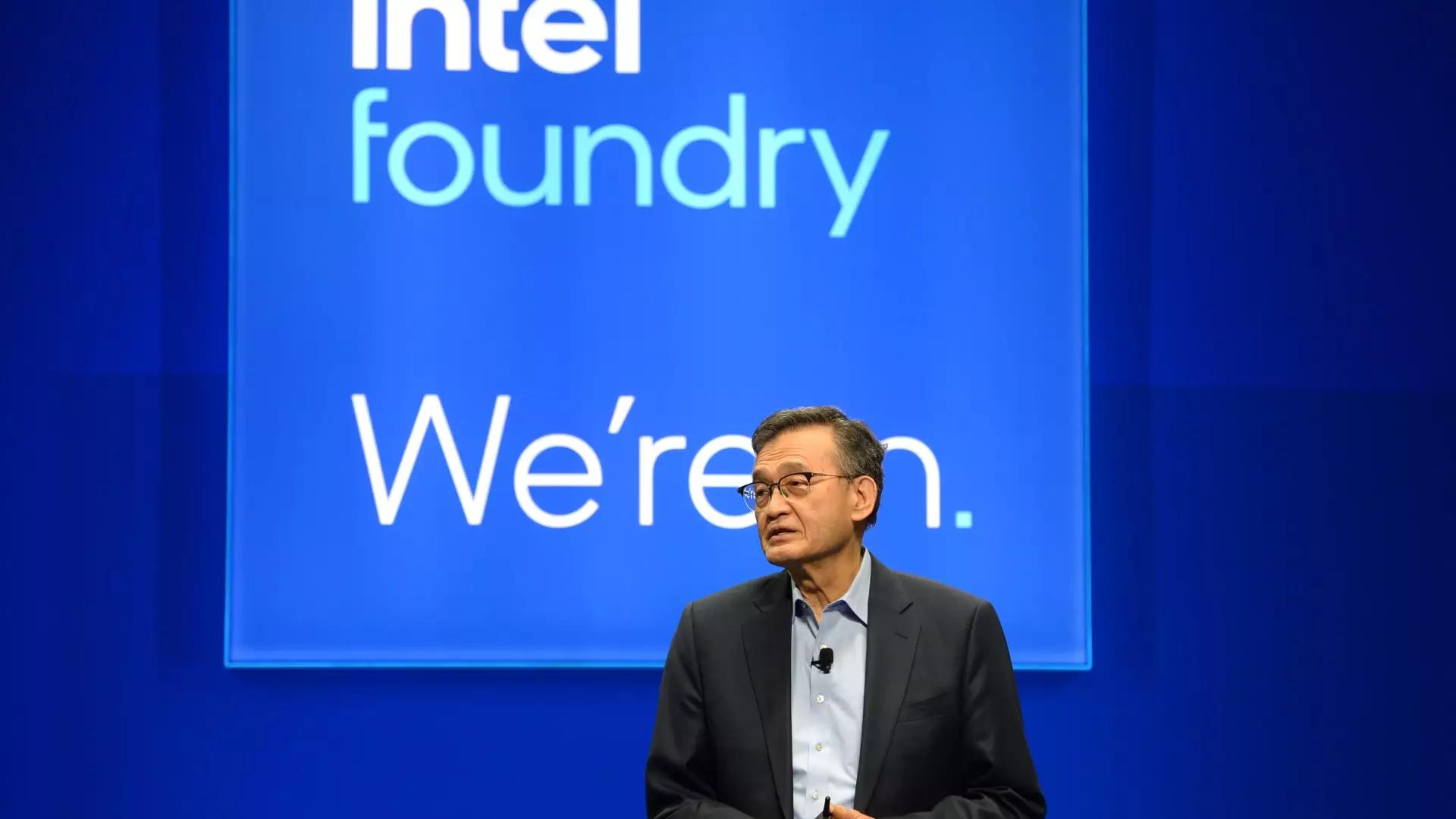Intel’s recent financial disclosures paint a bleak picture of a once-dominant industry leader mired in strategic missteps and declining market confidence. Despite announcing better-than-expected earnings, the company’s stock plummeted over 8%, stripping away years of gains in a matter of days. This stark divergence between short-term financial performance and long-term viability underscores an urgent need to scrutinize not just the numbers, but the fundamental flaws in Intel’s approach to innovation, market positioning, and strategic direction.
What’s most alarming is the company’s self-inflicted uncertainty surrounding its foundry ambitions. For years, Intel aimed to challenge Asia’s manufacturing dominance—particularly that of Taiwan’s TSMC and South Korea’s Samsung—by investing heavily in cutting-edge fabrication facilities. Yet, the recent admissions make it clear that these investments might prove to be nothing more than strategic vanity projects if external customers do not materialize. The threat of pulling the plug entirely on its foundry business reveals a leadership that is overly ambitious but fundamentally unprepared for the realities of the marketplace.
Strategic Shortcomings and a Lack of Competitive Edge
One of the most glaring issues is Intel’s failure to attract external clients to its manufacturing services. According to SEC filings, the company admits to having “failed to secure any significant external foundry customers” for its newest process node, 14A. This admission exposes a critical weakness—while Intel continues to pour money into building state-of-the-art facilities, it does not have the demand to justify those investments. This disconnect between infrastructure and market appetite speaks volumes about misreading industry trends and customer needs.
Meanwhile, competitors like TSMC are not only winning global design wins but also steadily commanding an increasing share of the AI chip market, a sector Intel struggles to penetrate. Nvidia has become a dominant force in AI, wielding their specialized chips with a finesse that Intel’s broad portfolio cannot match. The result is a clear erosion of Intel’s competitive edge, further exacerbated by internal fragmentation and overextension, notably in Europe and Ohio.
Leadership and Market Confidence: A Tale of Turmoil
The tenure of CEO Lip-Bu Tan embodies a period of turmoil for Intel. Appointed amidst high expectations, his early months have been riddled with layoffs, restructuring, and strategic pivoting. The announcement of a 15% workforce reduction, equating to 75,000 employees, is a stark testament to the company’s downward spiral. Tan’s reflection that “invested too much, too soon” highlights a fundamental miscalculation: overconfidence fueled by hype rather than market demand.
The company’s financials reflect this recklessness. Its net loss widened to $2.9 billion, compounded by impairments that hint at overcapacity and poorly timed capital expenditure. Such losses are not mere temporary setbacks but structural indicators that Intel’s previous strategy lacked precision. Without a clear, actionable plan to generate sustainable demand or to carve out a differentiated niche in high-growth markets like AI, these losses threaten the company’s future.
The Fall of a Tech Powerhouse: A Critical Perspective
To dismiss Intel’s recent pitfalls as mere cyclical downturns would be a dangerous oversight. The core problem lies in a misguided belief that investing heavily in manufacturing prowess alone can sustain dominance. True industry leadership requires agility, demand-driven innovation, and strategic alliances—elements that Intel currently lacks.
Optimism about short-term earnings must be tempered by the reality that the company’s foundational weaknesses remain unaddressed. Its inability to secure external clients for its foundry process jeopardizes its long-term prospects, especially as global chip demand grows increasingly specialized and competitive. If Intel cannot pivot towards customer-oriented solutions and rebuild trust in its technological leadership, it risks becoming a cautionary tale of overreach and misaligned priorities.
The stock’s nosedive and record year-on-year losses highlight that shareholders are losing faith in Intel’s narrative of revival. The question is whether leadership recognizes that the real solution is less about building sprawling facilities and more about cultivating strategic partnerships, innovating intelligently, and repairing its reputation in markets where it once reigned supreme. Without these critical changes, Intel’s reputation—and perhaps its future—remains on uncertain ground.

